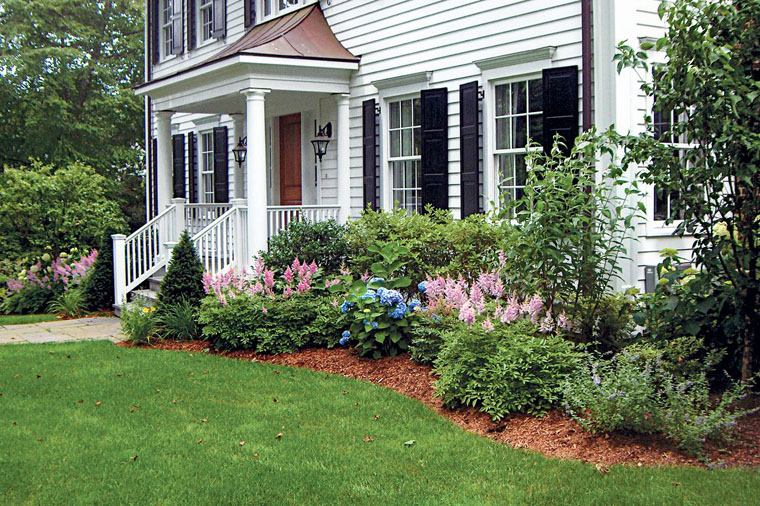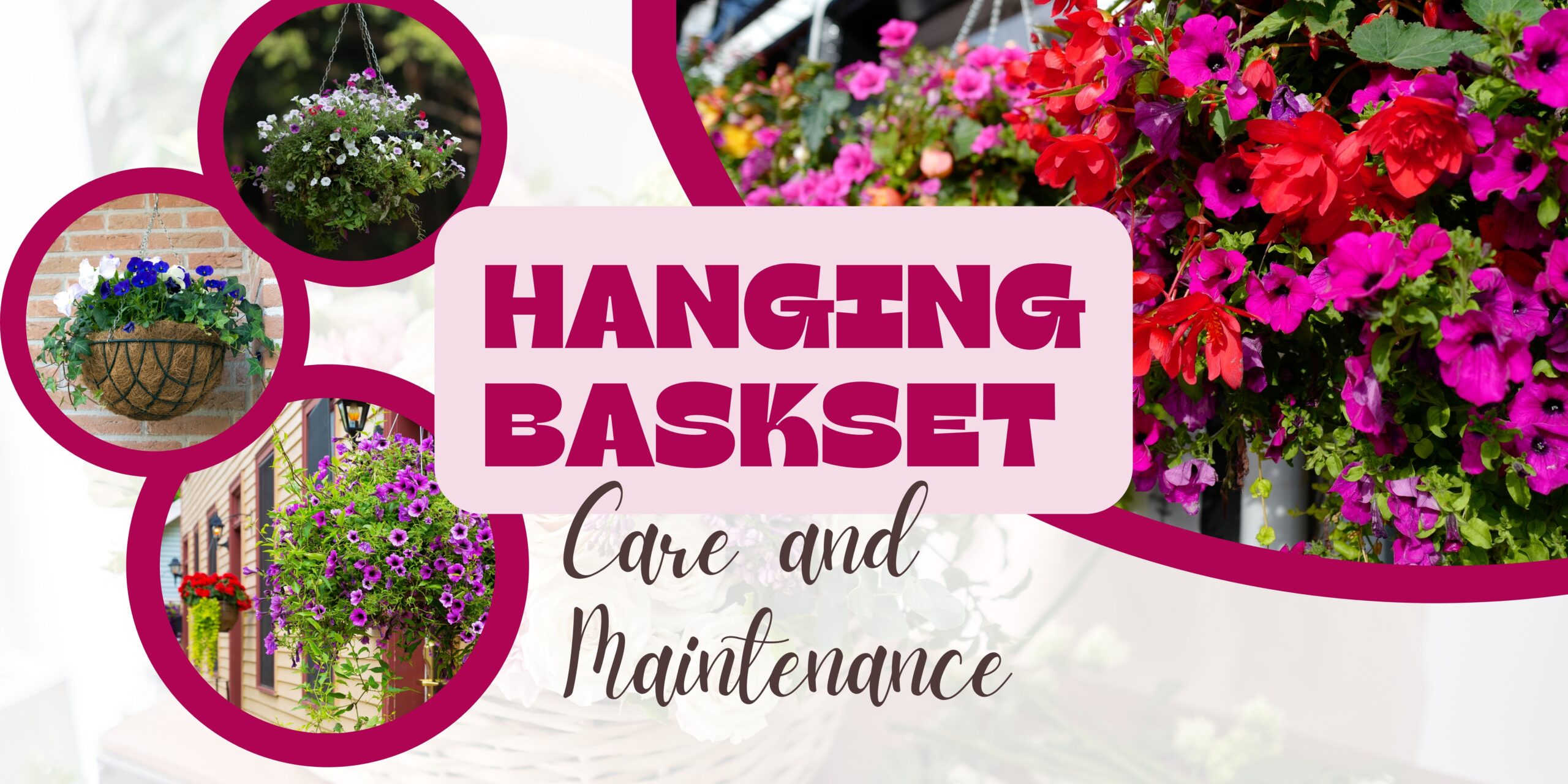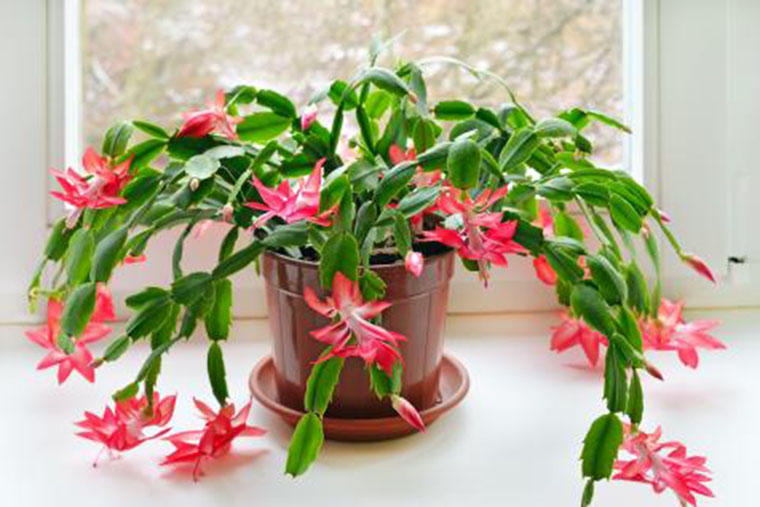Design Tips to Landscape Like a Pro
Whether you are looking to improve an existing garden or starting a new landscaping project from scratch, chances are you’ve walked into a garden centre, looked around at the numerous possibilities and realized you’re not quite sure where to start. Or maybe you’ve tried a few plants that caught your eye, but for one reason or another they didn’t quite work out.
The good news is that a well designed landscape does not require hiring a professional or getting your own degree, but it does require a bit of planning and a little understanding of some basic design principles. The eight following tips are some general guidelines that professional landscapers use in their planning. These strategies can also provide you with a solid starting point to landscape like a pro.
1. Find the Right Plant for the Right Place
Planting the right plant in the right place is one of the first rules of good garden design. Beautiful landscapes contain plants that are healthy, so it is important to choose varieties known to thrive in the conditions of the planned location. A few things to consider while assessing if it is the right plant for the right place :
How much sunlight will that location get?
How much moisture does that location tend to hold?
Helpful Hint : Most people, even those with all the best intentions, tend to gravitate towards things that are easy. If a plant is planted in a spot that’s too dry, most people will not water it enough over the years and the plant will fail to thrive.
2. Size Matters
Similar to number one, size also needs to be considered when finding the right plant for the right place… keep in mind that plants GROW. A landscape won’t look its best if the shrubs and trees need to be cut back constantly to keep them small. Similarly, if some plants grow so large that they smother others or block windows or walkways, this can tend to look unkempt or poorly designed. Check labels to find out how large the plants are expected to grow and space them accordingly. If a newly planted landscape is looking bare because the plants are appropriately spaced but still need time to grow, use perennials, annuals or objects such as bird baths to help fill out the space temporarily.
Helpful Hint : Use the plant label as a sizing guide, but know it may not be totally accurate. Some trees and shrubs can grow larger that the listed height and spacing on the label, but others won’t. In alberta, due to our drier climate and shorter growing season, it often takes longer for trees and shrubs to reach their full size. How quickly a plant grows is dependent on both the variety and the conditions.
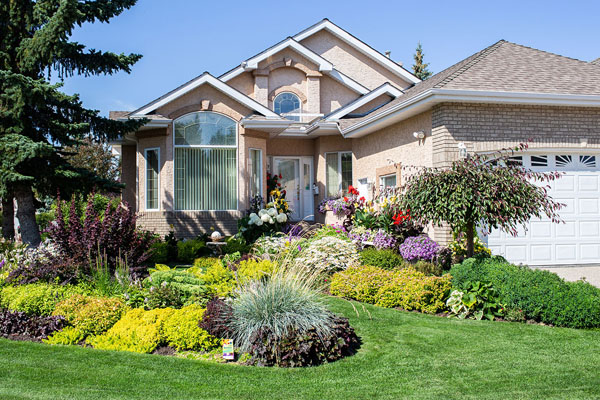
3. Use a Variety of Textures and Colours
Most people tend to focus on flowers, but a good garden designer looks at foliage first. Unlike flowers which have a relatively short blooming window, the foliage remains all season. Many plantings tend to look boring because most of plants will have similar foliage. Choose a variety of leaf sizes, colors and textures. A balanced landscape will have a mixture of foliage colours, textures and evergreens so the garden will still look beautiful when the plants are not flowering.
Helpful Hint : For example, place a plant with large green leaves next to one with bluish needles, followed by a shrub with purple or red foliage.
4. Plan for a Range of Flowering Times
When choosing flowering plants, be mindful of flowering times. Try to have plants that flower at different times so that something special is happening in all seasons.
Helpful Hint : Also be mindful of placement in relation to flowering times, especially when several varieties are planted within a shared bed.
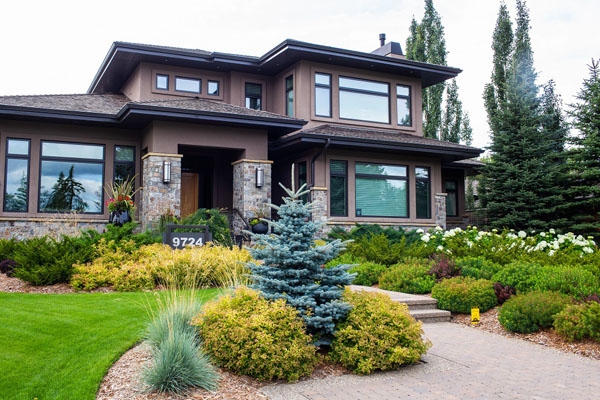
5. Use a Mixture of Deciduous and Evergreens
Similarly, plan for a mix of both deciduous and evergreens. Evergreens are plants that keep their foliage 12 months a year, where as deciduous plants will lose their leaves and go dormant in the winter. This is especially needed in our climate where our grow season is short and our winters are long. Evergreens and structures such as stone walls or fences are often called “the bones” of a garden. Landscapes with “good bones” are beautiful even when the deciduous plants lose their leaves and go dormant.
Helpful Hint : When planning the “bones of your garden” keep in mind how things will look with thick snow fall.
6. Sometimes Less is More
Try to avoid going overboard with novelty plants. Even if you love topiary, weeping varieties, or variegated plants, when these plants are used to excess, they lose their impact. Save these types of plants to be used as a feature plant.
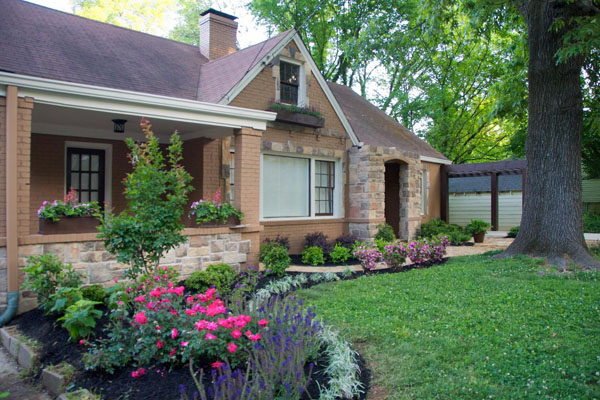
7. Use a Both Group Plantings and Single Feature Plants
Good landscape designs will have a mix of both group plantings of a single variety as well as stand-alone feature plants. To help your feature plant stand out, use a contrasting size, colours, and textures in the surrounding group plantings.
Larger novelty plants or highly decorative plants work well as feature specimens.
Whereas smaller plants tend to work best when planted in groupings. Typically small shrubs and flowers look best when planted in larger groups of the same variety. Otherwise, a landscape can look like a messy hodge podge of this and that. The layout of group plantings can also affect the overall aesthetic, plants in straight lines tend to have a more formal look, whereas plants in organic clusters have a more natural and relaxed feel. Most well balanced gardens will have a bit of both, even if the “straight lines” are curving around the border of a bed.
Helpful Hint : For both flowers and smaller shrubs, consider planting an odd number.
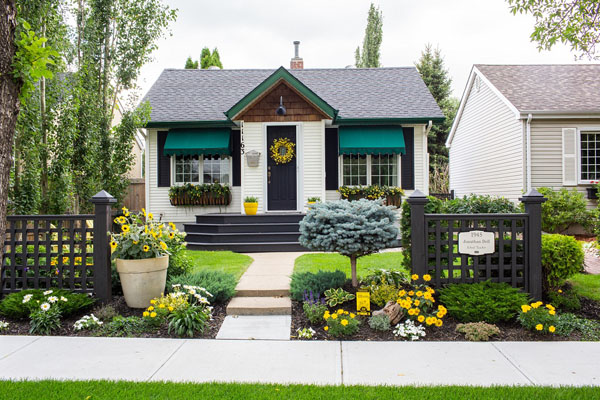
8. Use Some Repetition
Lastly, while variety is good, too much can be well… too chaotic. Repetition helps to tie together a design when there is a lot of variety. Plant groupings help create visual repetition, but so can repeating colours, textures, or even repeating plant varieties or groupings in multiple locations.
 |
| 
